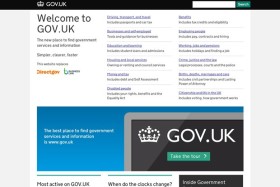Gov UK and DTO. The elephant in the room…
The last few months have seen some significant and timely shifts in the Australian Government’s approach to embracing the digital revolution. Most significant of all, and possibly the least planned element of the whole thing was Malcolm Turnbull’s appointment as Prime Minister.
Prior to taking the top job, Turnbull’s plans for the newly formed Digital Transformation Office in Canberra were well formed including the very highly regarded appointment of Paul Shetler to head the operation. After investing time in exploring “digital” through a range of committees and working groups including the lengthy Gov 2.0 initiative, the creation of the DTO marked a clear intention to drive positive change. And while there was little doubt about the importance of the DTO prior to Turnbull becoming Prime Minister, few doubt that his appointment has now further strengthened their position.
It’s inevitable that comparisons are already being drawn between the DTO and the perceived success of Gov UK, famous for its many achievements, but most significant perhaps for breaking the traditional silos of government in creating the “GDS”, a central team of digital excellence. The vision has rightly been lauded and the Gov UK website itself is probably the best evidence of the simple and straightforward approach the team has taken to delivering Government services online. As someone who’s worked on a few complicated Government websites, it’s all very impressive.
The challenge of course in applying the UK model to Australia is that our system of Government, while still based on the Westminster system, differs from the UK in nine significant ways. Unlike the UK, in Australia we have nine parliaments. Nine. And it’s fair to say that on some issues, communications between the states and their counterparts in Canberra may not always be “ongoing”. Sometimes for good reason, sometimes…well, not so much.
One of the key cultural trends that I observed working in the public sector for the first time was a tendency to try fix service delivery issues by making changes to internal structures and process. To solve service delivery issues, it was common to see departments restructured or moved to different parts of Government. Where they continued to do the same job. Where communication was poor it was usually as a result of trying to please internal stakeholders rather than the people we were all paid to serve.
Not dissimilar in fact, to problems faced by any struggling private sector businesses that gets too big. Forgetting that the customer comes first.
With the impending move of the DTO to Sydney, I imagine there are already conversations about structure, perhaps even a plan for replicating the success of the GDS in Australia. There’s already been plenty of technology based discussion about how the states and DTO can work together. The admirable DTO blog is inviting input on a range of issues. Creating greater sharing and synergy between Canberra and the States is an important issue to resolve if we are going to maximise the benefits of the digital age. But the structure and alignment of Government is not the key issue.
What DTO has to achieve, and in doing so truly break new ground, is to find ways of delivering services better to the Australian public. In ways that don’t get blocked or hijacked by state differences and systems. Service improvements that resonate with the user. Ideally ones that also reduce the cost of operations. Structure and process must be a secondary consideration.
While I rail against the notion of “disrupting Government”, my old colleagues at Service NSW have already proved the benefits of a customer friendly, agile and “always on” approach to service delivery. They continue to work towards increased digital delivery whilst also extending opening times and ensuring that visitors receive the best treatment. The same is true about the apps being produced by the various State Transport organisations and the work being done with digital tools by Fire and Emergency Services nationally.
What I’d like to invite the DTO to do is to work with the states, not on the bureaucracy of how they are going to work together, but on identifying the good work that’s already underway in each state on key projects to improve the lives of Australians. Across state boundaries and across politics.
In a week when many senior people are meeting to discuss this important issue, I’d really like to see the DTO become the galvanising force for recognising the excellent work already being done across the length and breadth of Australia.
In my travels, I’ve been shown so many great State Government initiatives already in place under the heading of “digital”. You won’t find them listed anywhere as they are spread between the states and Governments are oddly disinclined to share success stories. From Hobart to Cairns, what they all have in common is that they are improving services. The fact that they are digital is secondary to the fact they are better. And almost certainly saving money along the way.
Now that’s transformation. And Digital as well…
Thoughts? You can contact me by email at alun@govcomgroup.com.au

